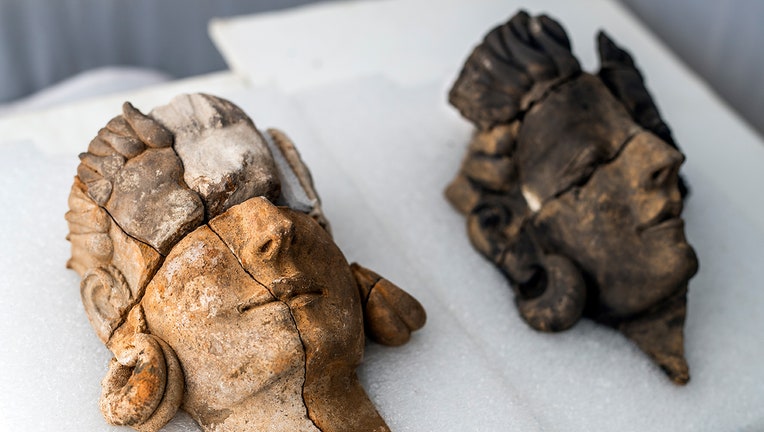Archaeologists unveil first-ever human representations of lost Tartessos civilization

Figured reliefs found at the Casas del Turuñuelo site (Badajoz). / Samuel Sanchez (El País)
BADAJOZ, Spain - Archaeologists excavating the ancient Tartessian site of Casas del Turuñuelo have uncovered the first human representations of the ancient Tartessos people, shedding light on the Bronze Age civilization that mysteriously vanished around 2,500 years ago.
The historical and lost civilization of Tartessos flourished in southern Spain and has been previously linked to the myth of Atlantis.
According to a team at the Institute of Archaeology, a joint center of the Spanish National Research Council (CSIC), the discovery was made during an excavation of the eastern sector of the site, where a "massive sacrifice of animals," mainly horses, was documented.
Found were the remains of five reliefs, which date back to the 5th century BC.

Archaeologists discover tunnel that may lead to lost tomb of Cleopatra
Archaeologists have discovered a tunnel at the Temple of Taposiris Magna near Alexandria, Egypt, that they think may lead to the lost tomb of Queen Cleopatra. (Credit: Egyptian Ministry of Tourism and Antiquities via Storyful)
"The unusual thing about the new finding is that the representations correspond to human faces," Eric López, a communications spokesperson for CSIC, said in a statement Tuesday.
The team from CSIC and the Junta de Extremadura, led by Esther Rodríguez González and Sebastián Celestino Pérez, confirmed Tuesday at a press conference that two of the figurines correspond to two female figures adorned with prominent earrings or hoop earrings that represent typical pieces of Tartessian goldsmithing.
"Given the technical quality and artistic detail with which they were made, it seems that we are dealing with the representation of two female divinities from the Tartessian pantheon," the researchers added, further suggesting they could be prominent figures in Tartessian society.
Along with the two female figures, other fragments were also recovered, belonging to at least three other individuals. One of them was identified as a warrior by preserving part of the helmet.

Sabertooth cat skull found in Iowa
A recent discovery of a complete sabertooth cat skull in southwest Iowa is the first known evidence of the animal in the state. (Credit: FOX Weather)
The researchers say the finds represent a "profound paradigm shift" in the interpretation of Tartessos – traditionally considered an aniconic culture for representing divinity through sacred stone, animal or plant motifs, rather than humans.
While it’s still unknown how Tartessos vanished, new understandings and hypotheses have emerged on how the civilization may have ended.
Some experts believe that one or more major earthquakes, and subsequent tsunamis, may have destroyed most of its coastal settlements and demoralized survivors.
RELATED: New species of poisonous birds discovered in New Guinea jungle by Danish researcher
Some researchers have even suggested that the port city of Tartessos may have been the inspiration for the mythical Atlantis. The idea stems from Aristotle’s linking of a river in southern Spain with both Atlantis and Tartessos.
The CSIC team hopes that future excavation of the ancient temple will reveal new insights about the Tartessos peoples, their culture and their disappearance.
"These findings further influence both the importance of the site and the importance of the Tartessian culture in the Guadiana valley during its last moments," López said in the statement.
This story was reported from Los Angeles.

